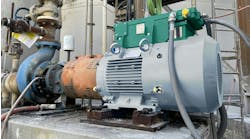Latest from Plant Operations
Cutting Off Global Trade Won't Revive the Rust Belt
One flaw in the conventional thinking about globalization is that it's an international phenomenon.
Manufacturing jobs move from the U.S. to China or Mexico. Immigrants move to California from Asia, or to Texas from Latin America. But as my Bloomberg View colleague Tyler Cowen points out, globalization can be a national phenomenon as well. Manufacturing jobs move from Indiana to South Carolina. College graduates leave Michigan for Georgia. Enacting restrictions on international globalization may have the unintended impact of accelerating intra-national globalization.
One of the challenges facing the Midwest is the intractable math of demographics. Why would an employer move to the Midwest?
In five of the Midwest states where Trump won – Wisconsin, Michigan, Ohio, Indiana and Iowa – there has been essentially no growth in the labor force in 15 years. As baby boomers retire in larger and larger numbers, this region faces the prospect of a labor force contraction with no end in sight.
All else equal, this means it will become harder and harder for prospective employers to find the workers they need.
Compare that with labor force trends in the more dynamic South.
Fifteen years ago, the combined labor force of Texas, Georgia and North Carolina was roughly the same as the labor force in the five Midwest states mentioned above. Yet over the past 15 years, the labor force in those Southern states has grown by around four million workers. The Southern labor force is younger than the Midwest labor force, increasingly well-educated, and oftentimes cheaper.
Employers can't afford to ignore these trends; they'll need workers five, 10 and 20 years in the future.
Restricting immigration will make it harder for Southern states to meet their employment needs, forcing them to recruit within the U.S., including from the Midwest. Health-care employers and school systems looking to staff up to meet the demand of growing Southern populations will try to poach workers from Michigan and Ohio. If homebuilders can't import construction workers from Mexico, they'll look to "import" from Wisconsin or Iowa. This may accelerate the talent drain out of the Midwest.
Remaining employers in the Midwest will respond to this loss of talent.
Perhaps President-Elect Trump can talk Carrier Air Conditioning into keeping its manufacturing facility in Indiana for now, rather than moving it to Mexico. But Carrier also has facilities in Collierville, Tennessee, and Charlotte, North Carolina.
Nothing's stopping Carrier from eventually moving its Indiana facility to one of those Southern states if the economics make sense. Maybe Macon can become the new Mexico.
There's no change in sight for the demographic and economic challenges of the rural Midwest. Populations are aging and in many cases shrinking. Infrastructure is aging. More people are leaving than are moving in. Winters are cold. Building walls and ripping up trade deals may reduce flows into and out of the country, but that will shift activity to more attractive places within the U.S., rather than overseas. Wisconsin still won't be a winner.
This column does not necessarily reflect the opinion of the editorial board or Bloomberg LP and its owners.












